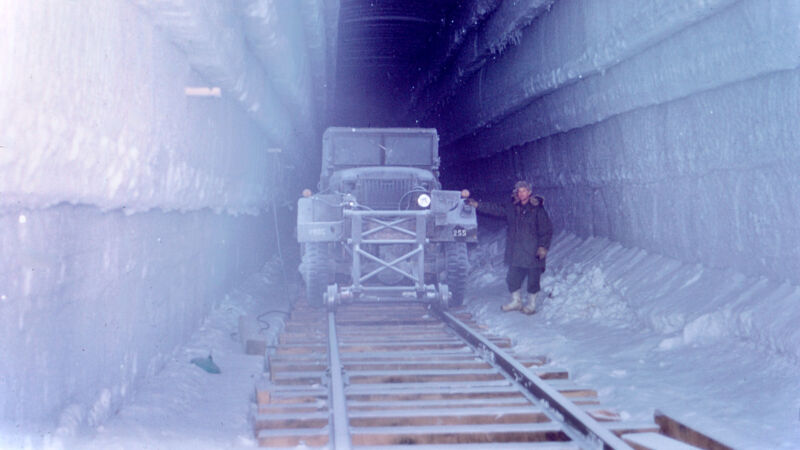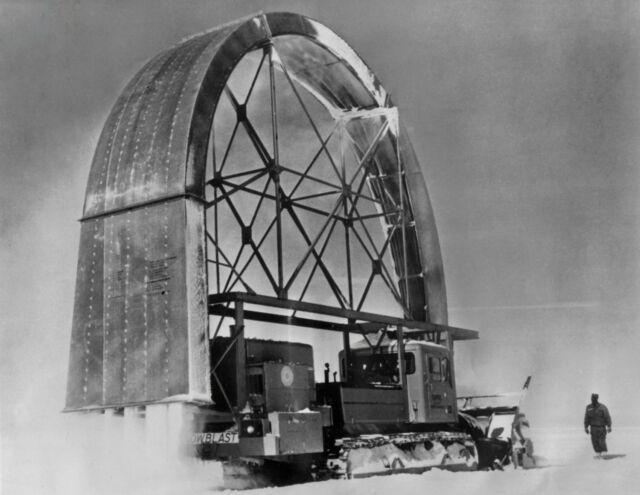
In recent years, the Arctic has become a magnet for climate change fears, with scientists nervously watching the Greenland ice sheet for signs of melting and worrying about rampant environmental degradation. It wasn’t always this way.
At the height of the Cold War in the 1950s, when fear of nuclear Armageddon hung over American and Soviet citizens, idealistic scientists and engineers saw the vast Arctic as a place of limitless potential to create a bold new future. Greenland emerged as the most tempting testing ground for their research.
Scientists and engineers working for and with the U.S. military came up with a series of audacious cold-zone projects, some innovative, many discarded, and most quickly abandoned. They were science fiction: disposing of nuclear waste by melting it through the ice; moving people, supplies, and rockets under the ice using subways, some perhaps nuclear-powered; testing hovercraft to race across impassable crevasses; making furniture from a frozen mixture of ice and soil; and even building a nuclear-powered city under the ice cap.
Today, many of their ideas, and the feverish dreams that spawned them, survive only in the yellowing pages and covers of magazines like “REAL: the exciting magazine FOR MEN” and dozens of obscure military technical reports.
Karl and Bernhard Philberth, both physicists and ordained priests, thought the Greenland ice sheet would be the perfect repository for nuclear waste. Not all of it: First, they would reprocess spent reactor fuel so that the long-lived nuclides would be recycled. The remaining, mostly short-lived radionuclides would be fused into glass or ceramic and surrounded by a few inches of lead for transport. They envisioned millions of radioactive medicine balls about 16 inches in diameter spread across a small area of the ice sheet (about 300 square miles) far from shore.
Because the balls were so radioactive, and therefore hot, they would melt into the ice, each using the energy of a little less than two dozen 100-watt light bulbs—a reasonable leap from Karl Philberth’s expertise in designing heated ice drills that worked by melting their way through glaciers. The hope was that by the time the ice containing the balls emerged on the coast thousands or tens of thousands of years later, the radioactivity would have dissipated. One of the physicists later reported that the idea had been shown to him, by God, in a vision.

Of course, the plan had many unknowns and led to heated debate at scientific meetings when it was presented: What would happen, for example, if the balls were crushed or hit streams of meltwater at the base of the ice sheet? And would the radioactive balls heat up the ice enough that it would flow faster at the base, allowing the balls to travel faster toward the coast?
Logistical challenges, scientific doubts, and politics doomed the project. Producing millions of radioactive glass balls was not yet practical, and the Danes, who controlled Greenland at the time, were never enthusiastic about allowing nuclear waste to be stored on what they saw as their island. Some skeptics even worried that climate change would melt the ice. Nevertheless, the Philberths visited the ice cap and published peer-reviewed scientific papers on their waste dream.

